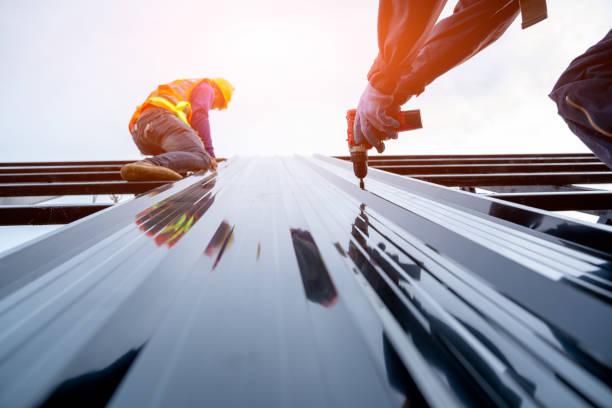
If you’re a business owner, property manager, or facility director, your building’s roof is one of the most important components of your commercial property. Choosing the right commercial roofing system can increase energy efficiency, reduce maintenance costs, and extend the life of your building.
In this guide, we break down the types of commercial roofing systems, their pros and cons, and how to choose the best option for your building.
A commercial roofing system is specifically designed for flat or low-slope roofs commonly found on office buildings, warehouses, retail stores, and industrial facilities. These systems are engineered to protect the building from harsh weather conditions while supporting HVAC units, foot traffic, and other structural demands.
Built-Up Roofing, also known as “tar and gravel,” is made from multiple layers of bitumen and reinforcing fabrics.
Benefits of Built-Up Roofing:
Best for: Large flat roofs with heavy foot traffic.
Modified bitumen is an asphalt-based roofing system with added polymers for extra flexibility and strength.
Why Choose Modified Bitumen Roofing?
Ideal for: Buildings in colder or storm-prone regions.
These are among the most popular modern commercial flat roofing systems. They’re lightweight and fast to install.
Advantages of Single-Ply Roofing Systems:
Used for: Retail stores, office buildings, warehouses.
Metal roofing is a premium option known for its durability and lifespan.
Top Reasons to Choose a Commercial Metal Roof:
Perfect for: Modern commercial buildings, schools, and government facilities.
A green or “living” roof is covered in vegetation and soil, built over a waterproof membrane.
Benefits of a Green Roof:
Great for: Eco-conscious buildings, urban developments.
When deciding on the right roofing system for your commercial property, consider these key factors:
Flat roofs may work better with TPO or BUR, while sloped roofs could benefit from metal systems.
Choose materials that withstand your region’s weather—snow, rain, wind, or extreme heat.
Reflective roofing materials like TPO or PVC can lower energy costs.
Some systems require more upkeep than others. Single-ply systems are typically easier to maintain.
Weigh upfront costs against the expected life of the system and potential energy savings.
Your roof is more than just protection—it’s an investment in your building’s future. The right commercial roofing system enhances safety, reduces long-term costs, and improves the value of your property.
Whether you’re replacing an old roof or building new, consult a professional commercial roofing contractor to assess your needs and recommend the best solution.
Contact our team today. We’ll help you find the best roofing solution for your business.